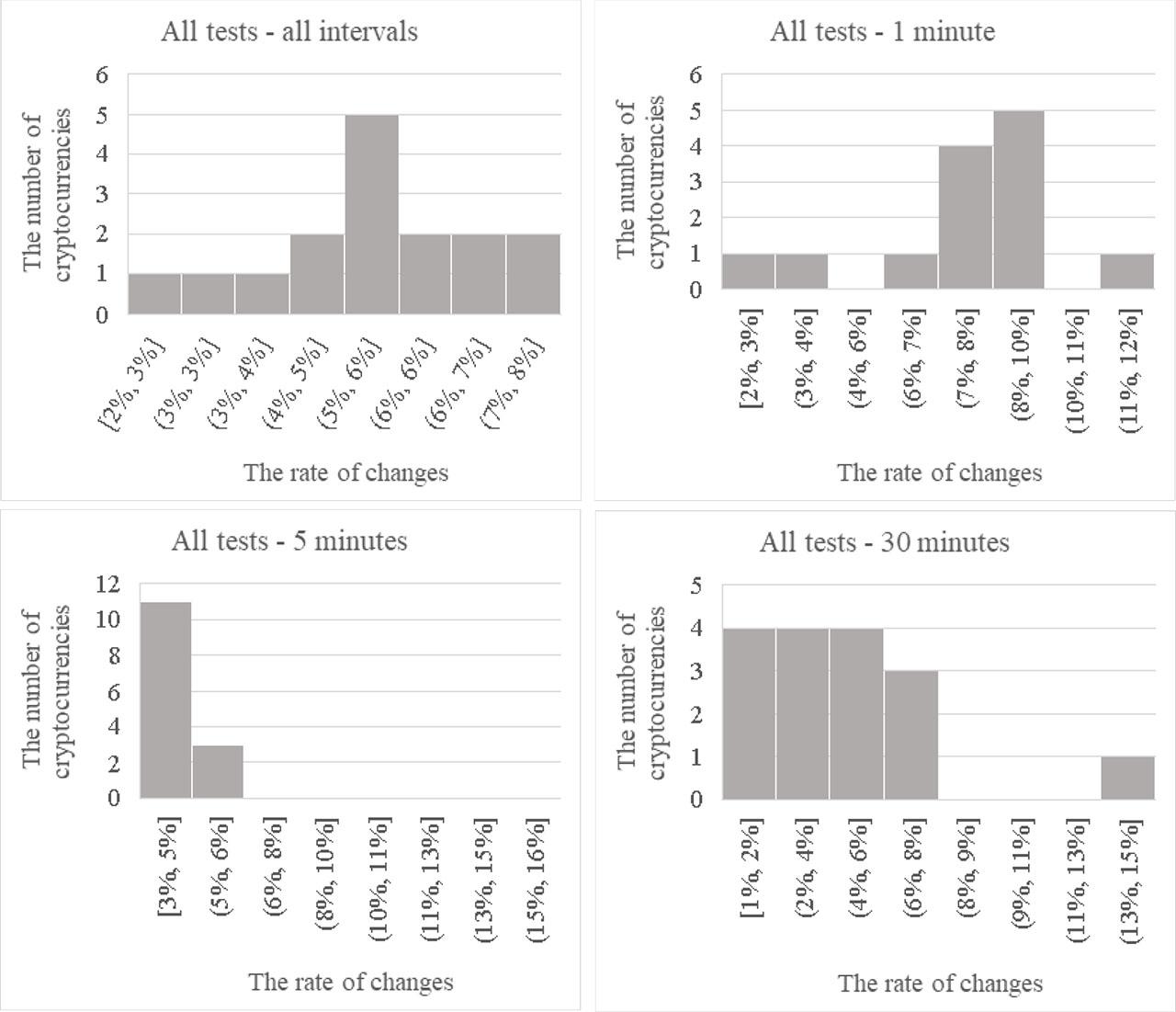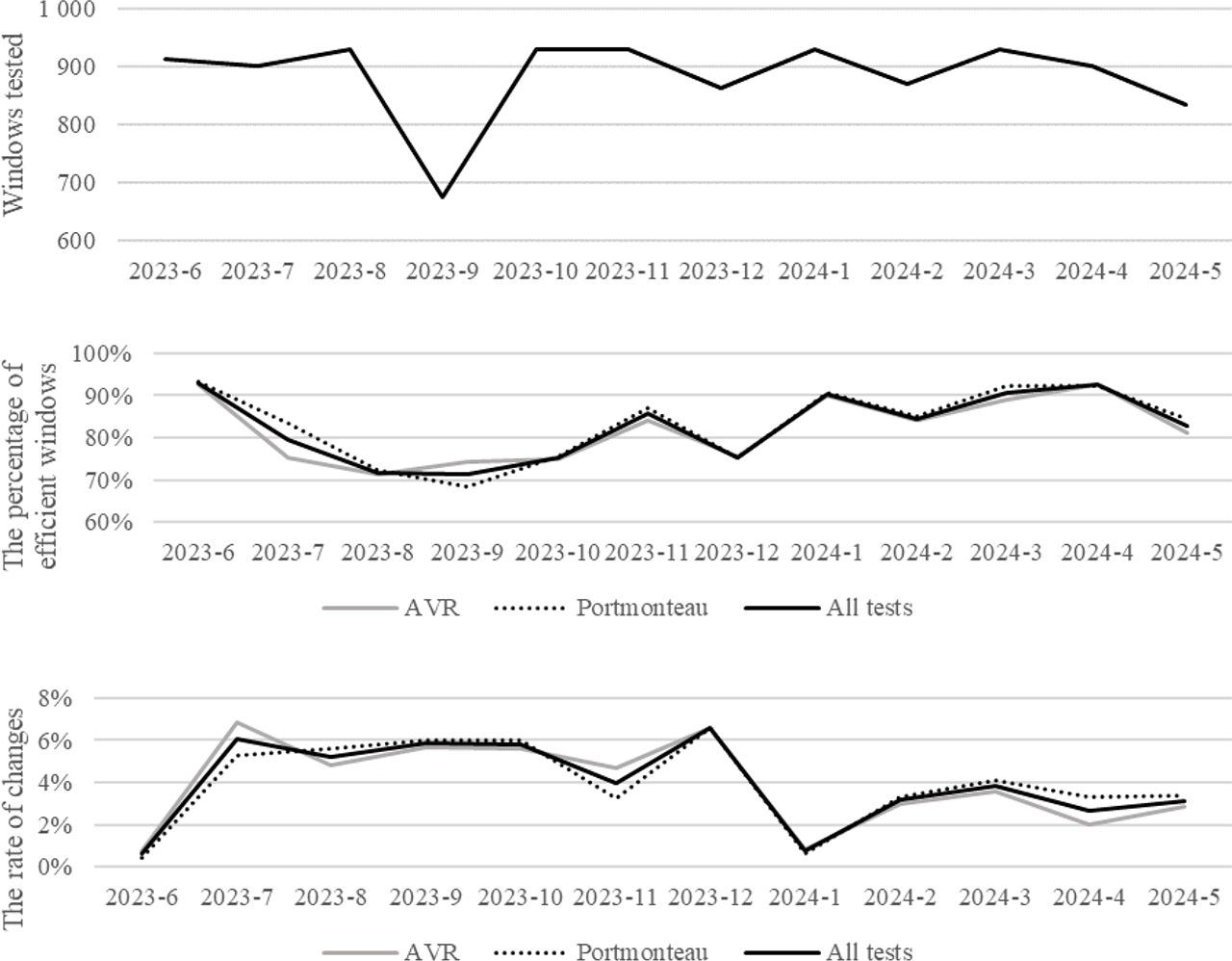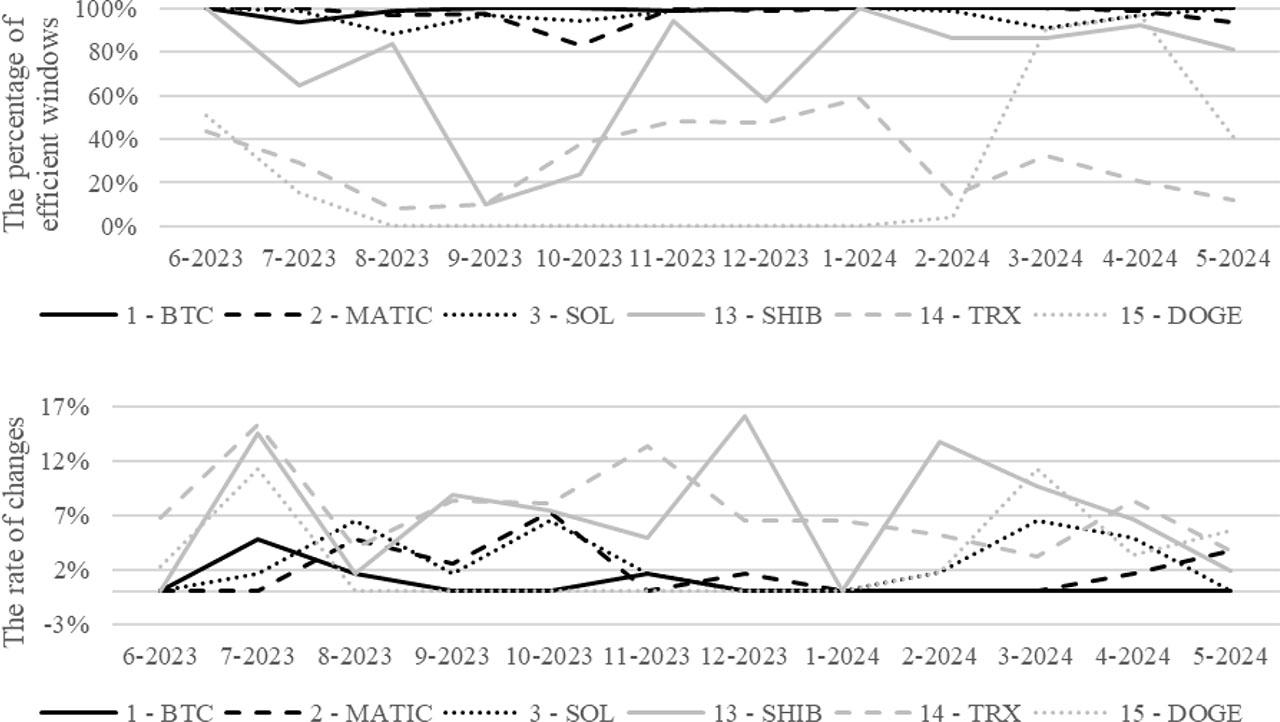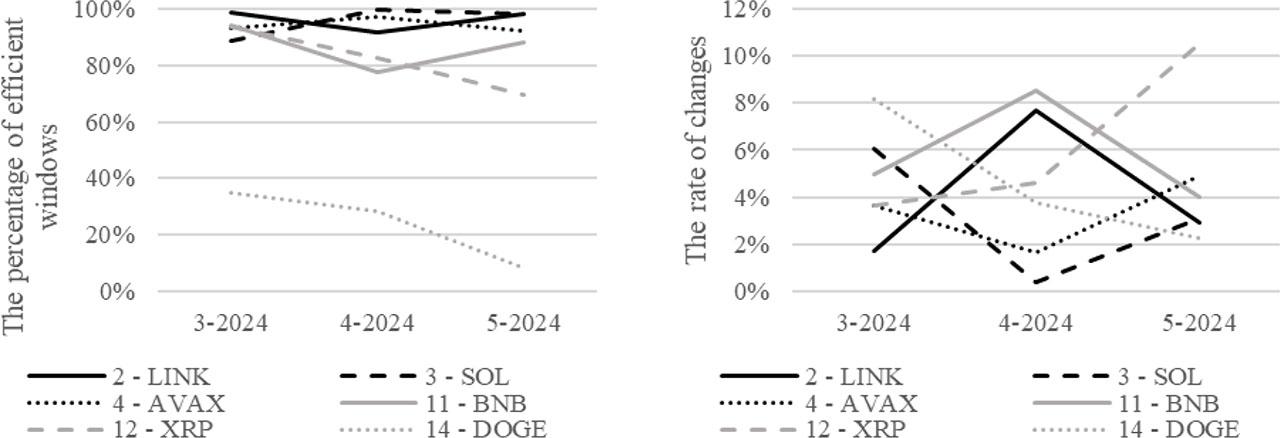Figure 1.

Figure 2.

Figure 3.

Figure 4.

Figure 5.

Figure 6.

Correlation coefficients for the percentage of efficient windows and the efficiency change rate
| Test/result | Coefficient | p-value | ||
|---|---|---|---|---|
| Interval | Spearman | Kendall | Spearman | Kendall |
| 1 min | 0.17 | 0.10 | 0.59 | 0.62 |
| 5 min | −0.58 | −0.52 | 0.02 | 0.01 |
| 30 min | −0.84 | −0.72 | 0.00 | 0.00 |
Correlation coefficients for the ranks of cryptocurrencies
| Test/result | Coefficient | p-value | ||||||
|---|---|---|---|---|---|---|---|---|
| Spearman | Interval | 1 min | 5 min | 30 min | Interval | 1 min | 5 min | 30 min |
| 1 min | 1.00 | 1 min | 1.00 | |||||
| 5 min | 0.21 | 1.00 | 5 min | 0.49 | 1.00 | |||
| 30 min | −0.79 | −0.04 | 1.00 | 30 min | 0.00 | 0.88 | 1.00 | |
| Kendall | Interval | 1 min | 5 min | 30 min | Interval | 1 min | 5 min | 30 min |
| 1 min | 1.00 | 1 min | 1.00 | |||||
| 5 min | 0.10 | 1.00 | 5 min | 0.68 | 1.00 | |||
| 30 min | −0.59 | 0.03 | 1.00 | 30 min | 0.00 | 0.92 | 1.00 | |
The summary of the results of the MDH tests
| Interval | 1 minute | 5 minutes | 30 minutes | All intervals | |||||||
|---|---|---|---|---|---|---|---|---|---|---|---|
| Cryptocurrency | Windows tested | Efficient windows | Efficiency change rate | Windows tested | Efficient windows | Efficiency change rate | Windows tested | Efficient windows | Efficiency change rate | Efficient windows | Efficiency change rate |
| Polygon | 709 | 97% | 2% | 97% | 2% | ||||||
| Avalanche | 571 | 90% | 7% | 697 | 94% | 3% | 709 | 95% | 2% | 94% | 4% |
| Chainlink | 571 | 83% | 8% | 697 | 96% | 4% | 709 | 90% | 5% | 90% | 6% |
| Bitcoin Cash | 571 | 83% | 8% | 697 | 91% | 5% | 709 | 95% | 3% | 90% | 5% |
| Solana | 571 | 72% | 12% | 697 | 95% | 3% | 709 | 97% | 3% | 89% | 6% |
| Cardano | 571 | 74% | 9% | 697 | 93% | 5% | 709 | 96% | 3% | 89% | 5% |
| BNB | 571 | 87% | 8% | 697 | 87% | 6% | 709 | 83% | 5% | 85% | 6% |
| Shiba Inu | 571 | 83% | 9% | 684 | 92% | 5% | 686 | 75% | 7% | 83% | 7% |
| Polkadot | 51 | 96% | 4% | 687 | 82% | 7% | 83% | 7% | |||
| NEAR Protocol | 571 | 53% | 8% | 684 | 93% | 4% | 700 | 90% | 6% | 80% | 6% |
| Ethereum | 571 | 44% | 7% | 697 | 93% | 5% | 709 | 95% | 2% | 80% | 5% |
| Bitcoin | 571 | 39% | 9% | 697 | 89% | 5% | 709 | 99% | 1% | 78% | 5% |
| XRP | 571 | 23% | 4% | 685 | 82% | 6% | 709 | 91% | 5% | 68% | 5% |
| TRON | 41 | 63% | 16% | 709 | 30% | 7% | 32% | 8% | |||
| Toncoin | 406 | 31% | 9% | 160 | 15% | 3% | 25 | 22% | 15% | 26% | 8% |
| Dogecoin | 380 | 3% | 2% | 697 | 24% | 5% | 709 | 24% | 3% | 20% | 3% |
| Average | 544 | 59% | 8% | 572 | 80% | 5% | 663 | 79% | 5% | 74% | 5% |
